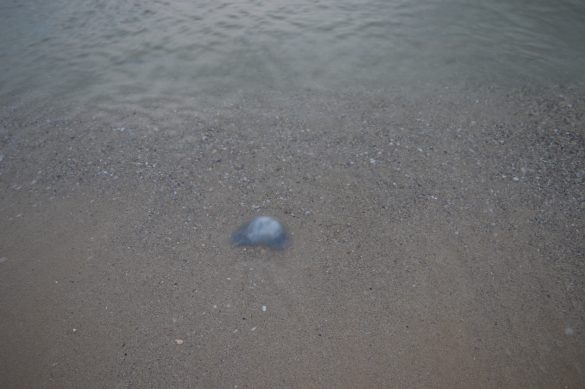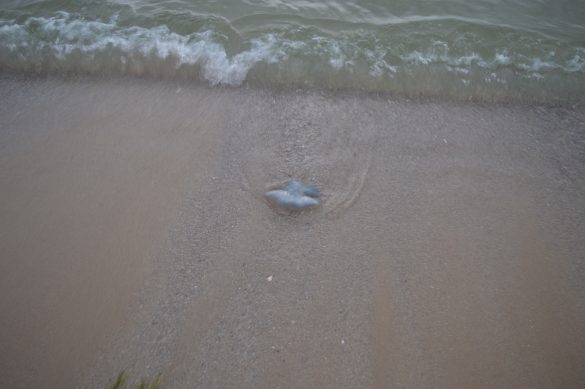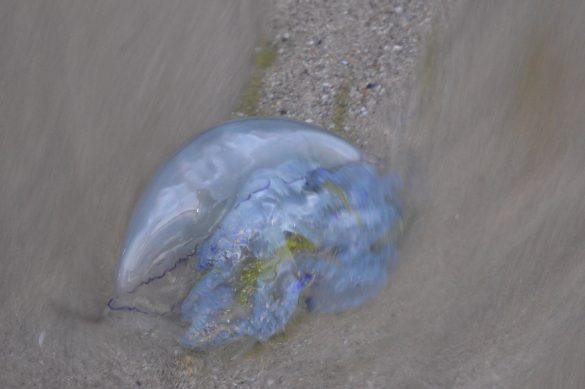Varna isn’t your typical tourist destination. The nearby resort of Golden Sands and a little further away, Sunny Beach draw the main tourist crowds during the summer. In winter the ski resorts of Bankso, Borovets and Pamporovo attract the skiers.
Varna does have a beach, as well as parks, museums and gardens.
Three days ago, I didn’t even know I was going to Bulgaria, let alone to Varna or NirVana as Col would’ve called it.
But I’ve ended up here for a few days, so here are my top 5 things to do in Varna – Bulgaria’s 3rd largest city.
Cathedral of the Assumption of the Virgin
Built in 1885 the Cathedral of the Assumption of the Virgin (also known as Dormition of the Mother of God) is located in the centre of Varna. It is the second largest Orthodox Cathedral in the country and one of the most famous in the region.
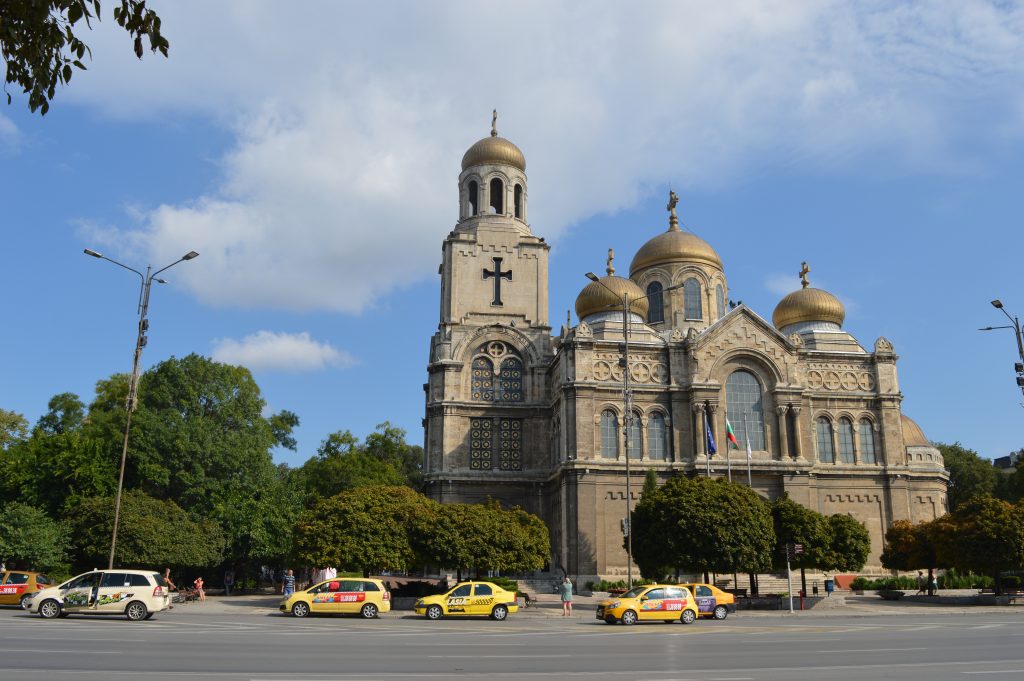
Cathedral of the Assumption of the Virgin, Varna
At night the cathedral becomes illuminated and stands with majestic grandeur overlooking the city.
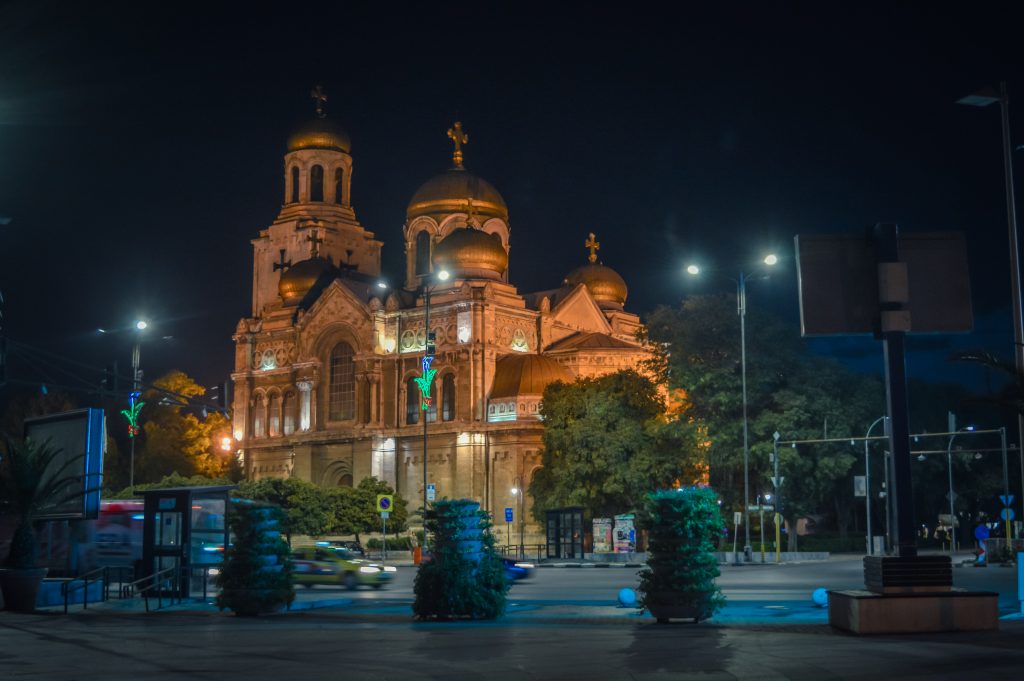
The Cathedral at night.
Roman Therme
These Roman baths used to be the biggest on the Balkan peninsula and the largest outside of Rome. You can see a sign in the background of the photo advertising a dolphin show. I strongly suggest NOT going there, or to any other similar animal tourist attraction anywhere in the world. It is cruel.
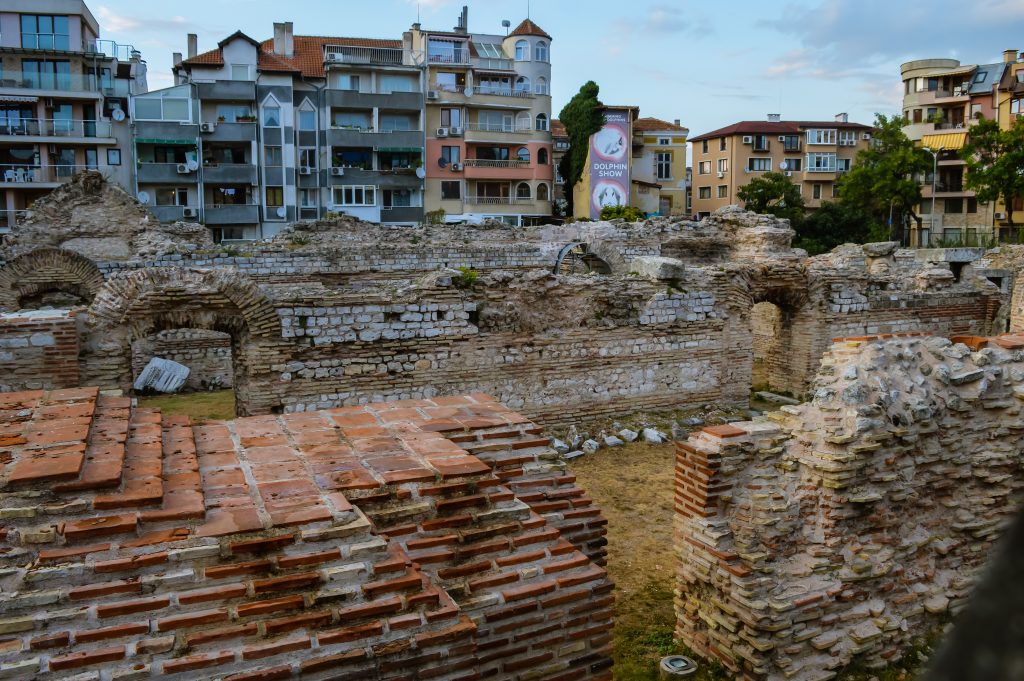
Roman Therme, Varna
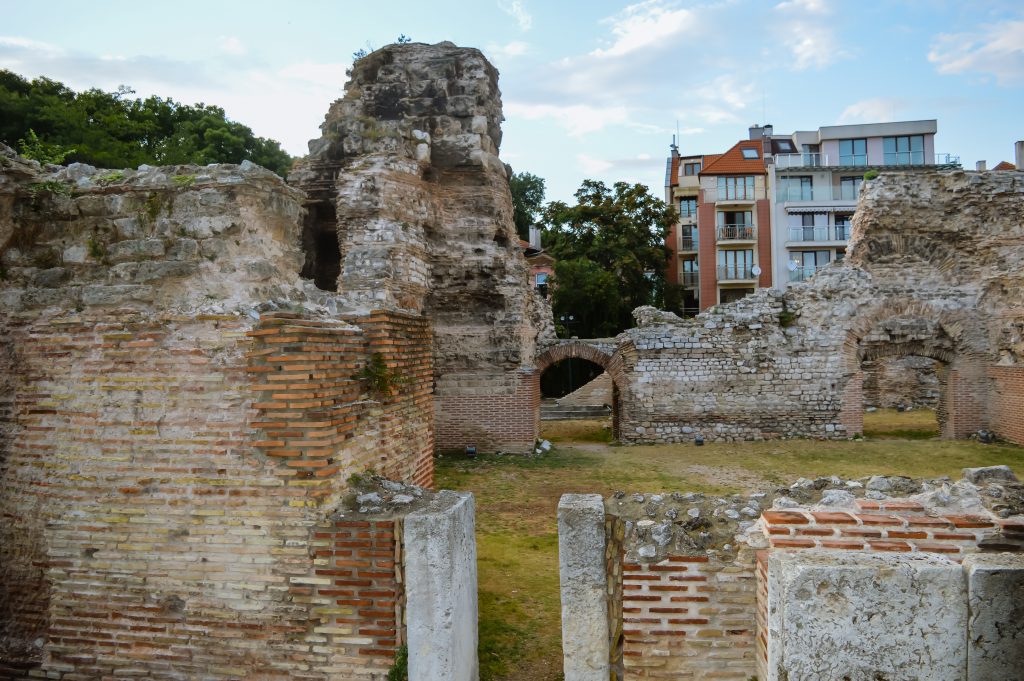
Roman Therme, Varna
Dating from the 2nd century, the Roman Baths originally covered an area of 7 square kilometres. The parts now visible includes all the principal premises of the baths. Entry to the Therme costs 5 Bulgarian Lev (approx £2.40).
Sea Garden, Varna
The sea garden runs parallel to the beach and is as popular with locals as it is with visitors. The garden also houses the Natural Science Museum, the Naval Museum, the Copernicus Astronomy Complex planetarium, the zoo and the Terrarium, the Dolphinarium (do NOT go) and Aquarium. The gardens also have a kind of library where you can take a book, leave a book.
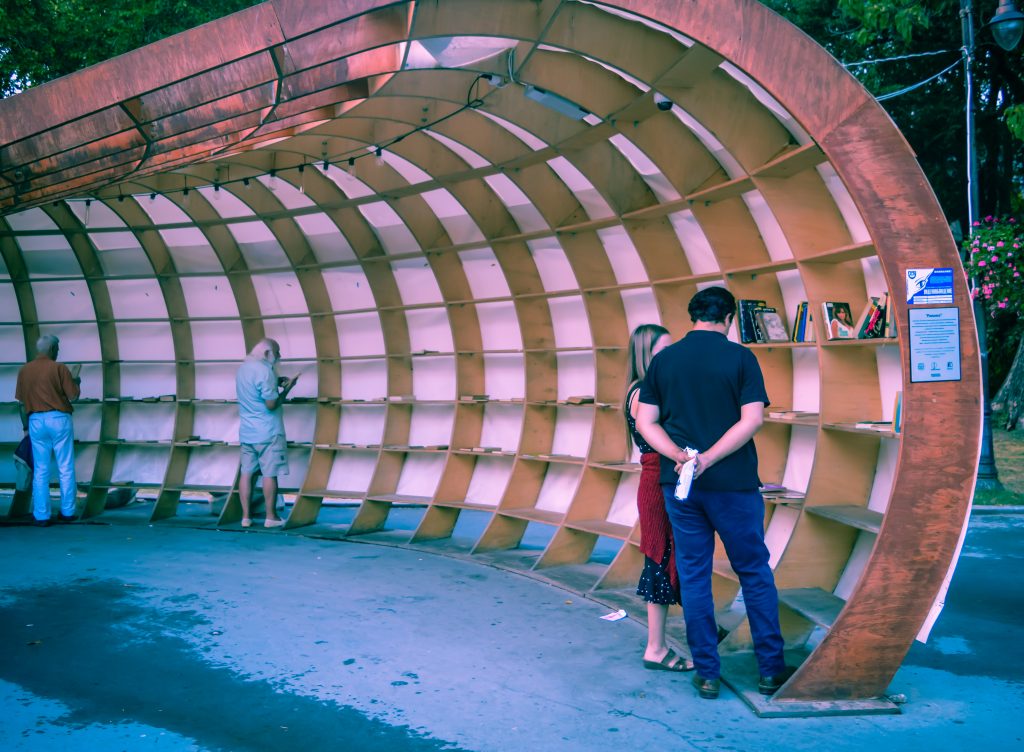
Take a book, leave a book.
There are plenty of small restaurants and small cafes where you can enjoy a drink or have a meal and watch the world go by. If you don’t fancy a drink or something to eat, there a plenty of benches to sit on if you need a rest.
Stone Forest / Stone Desert / Pobiti Kamani
The stone forest or stone desert is known locally as Pobiti Kamani. Until I arrived in Varna, I didn’t know Bulgaria had a desert. I found out about it in the morning and the same afternoon had arranged to visit. It’s about 18km from my hotel, so Yonka the receptionist kindly arranged for a taxi to take me there and back. Taxis are cheap in Bulgaria, the return journey plus waiting time cost me 38 Bulgarian Lev (about £18.40). Even though he was local, the taxi driver had never been to the stone forest so he enjoyed it too! Despite it being a bank holiday in Bulgaria (Unification Day), I was surprised at the lack of people there.
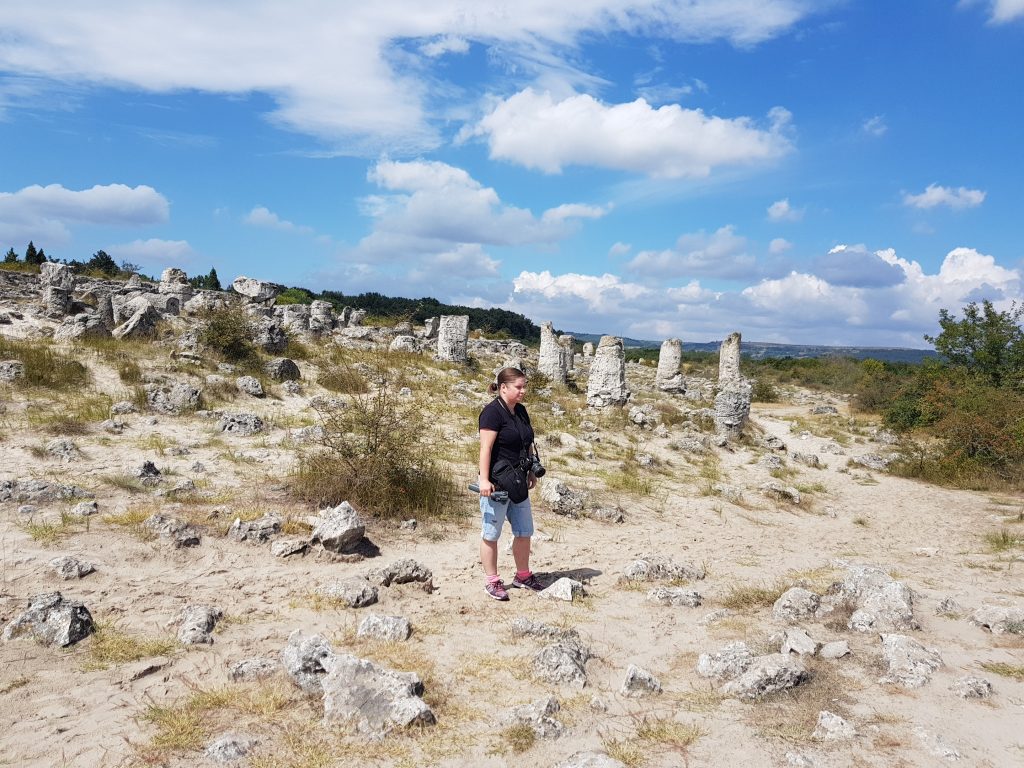
Nobody else but me and my taxi driver.
Once out of Varna the road to the desert is long and straight. I was intrigued (and rather naïve) to see what at first I thought was a smartly dressed female at the side of the road. I only realised that they were prostitutes/hookers after passing the 3rd or 4th girl and realising that actually, they weren’t wearing much at all.

Pobiti Kamani / Stone Desert / Stone Forest
The desert consists of sand dunes and several groups of natural rock formations on a total area of 13 square kilometres. The formations are mainly stone columns between 5 and 7 meters high and from 0.3 to 3 meters thick. The columns do not have solid foundations, but are instead hollow and filled with sand, and look as if they were stuck into the surrounding sand, which gives the phenomenon its name. Sandstorms and sand twisters have also been known to commonly occur in this desert region of Bulgaria.
The Stone Desert is not only a well known European tourist attraction due to its desert like habitat, but it is one of few places where desert type vegetation such as cactus are known to grow. It is also the only desert in Europe in which desert reptiles and other desert type animals are found to thrive. The Stone Desert along with the Tabernas Desert of Spain is one of two naturally formed deserts in all of Europe and the only known naturally formed desert in Eastern Europe.
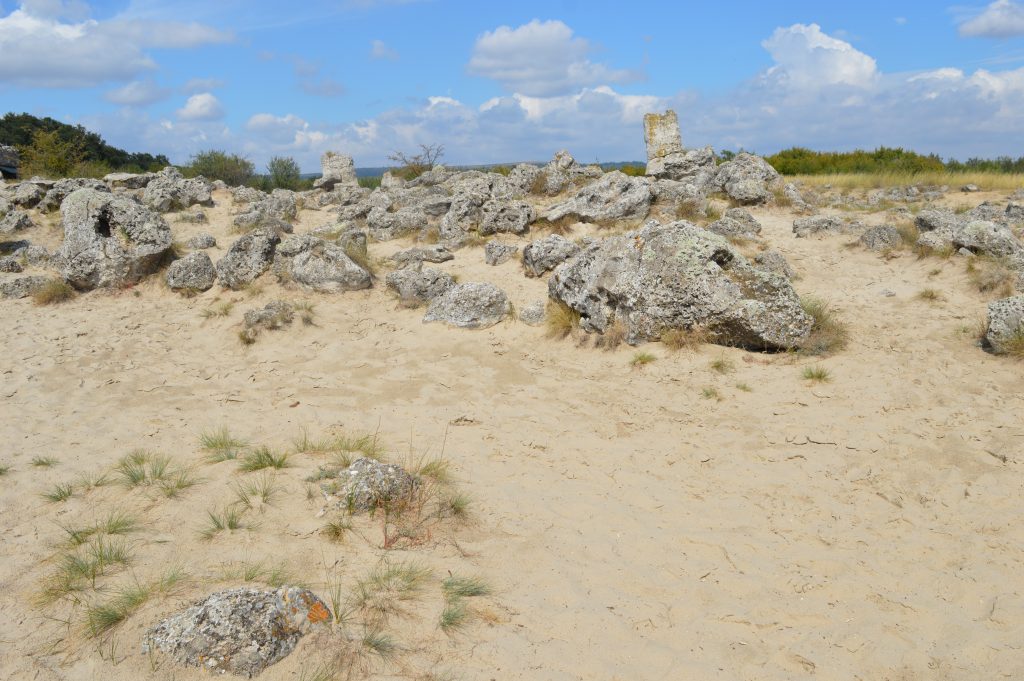
Pobiti Kamani / Stone Desert / Stone Forest
The Beach
A large sandy beach is easily accessible on foot from central Varna. Numerous restaurants, bars and clubs face the beach, so there are places to eat and drink if you’re tired of sunbathing. The beach is clean, but if you are looking for somewhere quiet to relax, I wouldn’t recommend coming here. Now (September) it’s the end of the season so it is quieter than during the summer months. However, the locals tell me there’s a bustling nightlife and loud music in June, July and August. If you like that kind of thing, then fine. But I don’t!
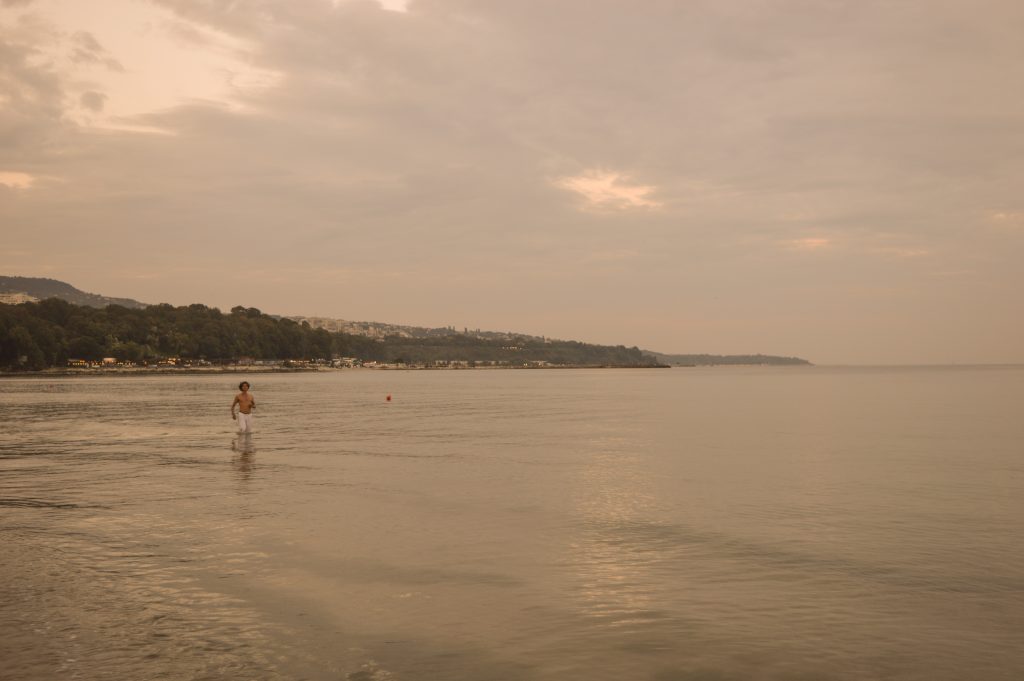
Varna beach just after sunset
I should also mention the amount of jellyfish. There are lots of them. I’m not sure if they are poisonous or not. I would presume they aren’t as there were people in the sea and I didn’t notice any signs advising not to go in the water. I even had a paddle myself! Having seen the jellyfish close up, I can totally understand how other creatures eat plastic and other litter that finds its way into the sea instead. At first I thought it was a lump of paper or plastic being washed up. A reminder to everyone to take their litter home and, or recycle and dispose of it in a responsible way.
Other things to do in Varna:
Have you been to Varna or elsewhere in Bulgaria? Let me know.
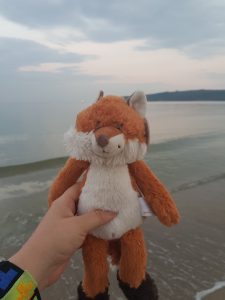
Country number 6 for my travel buddy!
